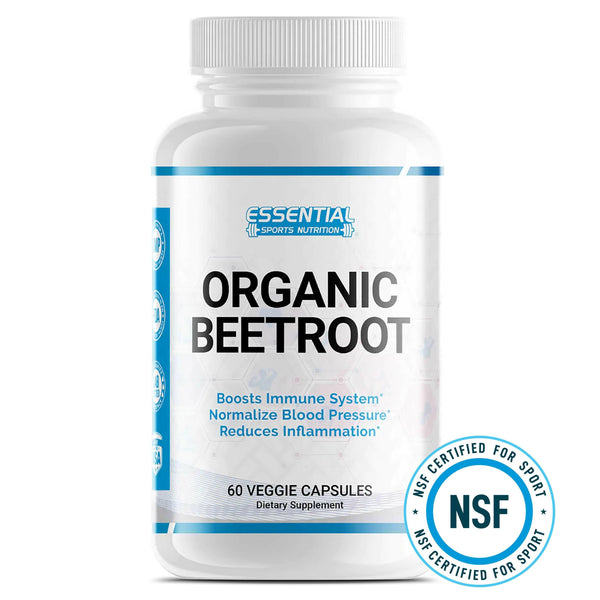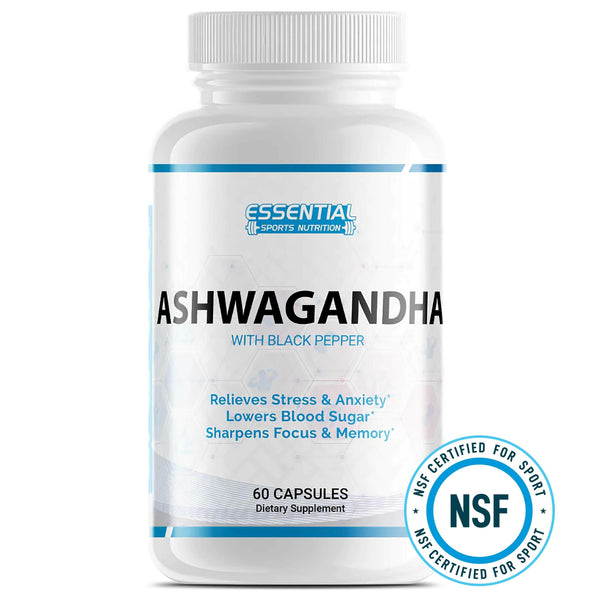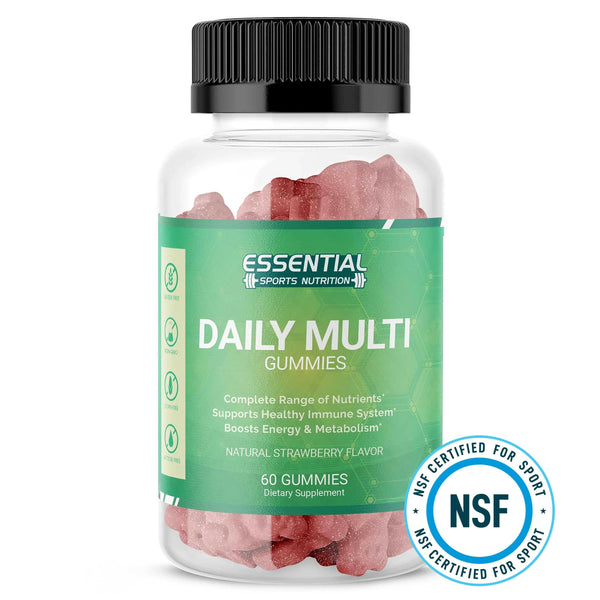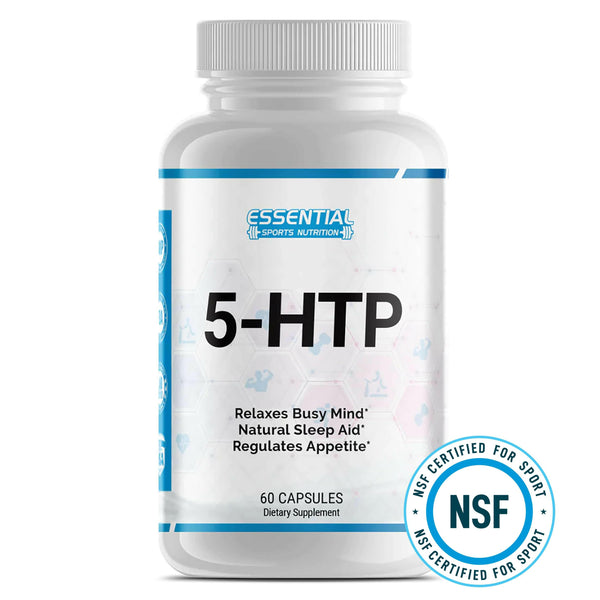Food Examples of Incomplete and Complete Proteins: Perfect Your Meal Prep
As you stock your pantry and plan your meals, understanding the difference between complete and incomplete proteins is essential for your health. Proteins, comprised of amino acids, are the building blocks that fuel your body's growth, repair, and maintenance. While browsing through protein-rich foods, you may find an array of both complete and incomplete protein sources. Complete proteins provide all nine essential amino acids that your body can't synthesize on its own and must be derived from your diet. Animal products like eggs, poultry, and dairy often fall under this category. On the other hand, incomplete proteins, which are typically found in plant-based sources like nuts, vegetables, and whole grains, lack one or more of these crucial building blocks.
You might wonder how you can balance these food examples of incomplete and complete protein in your daily intake. Whether you're a meat-eater, vegetarian, or vegan, there are bountiful ways to ensure that your body gets what it needs to thrive. Let's dive into the world of proteins and discover how to make the best choices for your health and lifestyle.

Key Takeaways
- Identify complete protein sources that offer all nine essential amino acids for your dietary needs.
- Explore various food examples of incomplete protein and learn how to combine them to form a complete amino acid profile.
- Understand the difference between complete and incomplete proteins to make informed dietary choices.
- Discover plant-based options that defy the norm and provide a full range of amino acids for those on a vegetarian or vegan diet.
- Recognize the importance of protein variety to ensure a balance of essential nutrients in your meals.
Understanding Protein and Its Vital Roles in the Body
Proteins are more than just part of your diet; they're the building blocks essential for the health and functioning of your entire body. They serve fundamental roles in constructing and maintaining everything from your muscles to your immune system. Let's explore how this vital nutrient impacts your health and why your protein intake is about more than just the foods you eat.
What Protein Does for Your Health
Every cell in your body contains protein, which is crucial for repair, growth, and maintenance. Whether it's bolstering bones or supporting hormone regulation, proteins derived from the protein in your diet play a central role. However, it's important to note that not all protein sources are created equal, data is a testament to that.
Protein examples, including enzymes and antibodies, are vital for numerous bodily processes. Enzymes, for example, aid in digestion and metabolism, while antibodies are critical for immune defense. Hormones, another protein example, are messengers that control bodily functions. Without adequate protein, your body would struggle to perform these activities efficiently.
How Protein Fuels Your Workouts and Recovery
For those leading active lifestyles, protein fuels workouts and aids in the important recovery process. When you exercise, your muscles endure small tears that are repaired with the help of proteins. This is why athletes often focus on their protein intake—to ensure that these building blocks are available when their bodies need to heal and build lean muscle mass.
The Balancing Act: Quantity vs. Quality of Protein
How much protein you need, and the quality of such protein, are equally important. The body can make some amino acids, but others — the essential amino acids — you need to get from food. Maintaining a balance between plant-based and animal-sourced proteins can help ensure you're receiving a comprehensive amino acid profile.
| Protein Source | Quantity of Protein | Quality (Amino Acid Profile) |
|---|---|---|
| Chicken breast | 31g per 100g | High (Complete) |
| Lentils | 9g per 100g cooked | Medium (Incomplete) |
| Eggs | 13g per 2 large eggs | High (Complete) |
| Almonds | 21g per 100g | Medium (Incomplete) |
Remember, a well-rounded diet that respects both protein examples and proper nutritional habits ensures your body is equipped with the required materials for good health and optimal functioning.
The Amino Acid Spectrum: Complete vs Incomplete Proteins

As you explore the world of proteins, understanding the distinction between complete vs incomplete proteins is pivotal for nutritional balance. This categorization largely depends on the specific amino acids that a food contains. To fully appreciate these differences, it is important to first decode the nature of amino acids in our diet.
Decoding Amino Acids: Essential vs Nonessential
You may have heard terms like essential amino acid and nonessential amino acids, but what do these mean for your health? Your body requires twenty amino acids to function optimally. However, it can only produce eleven of them. The other nine essential amino acids must be ingested through your diet. Essential amino acids are responsible for vital functions such as tissue repair, nutrient absorption, and hormone synthesis.
Why the Distinction Between Complete and Incomplete Proteins Matters
Understanding the difference between complete and incomplete proteins is essential, particularly if your diet is plant-based or if you're considering the implications of reduced meat consumption. Complete proteins contain all nine essential amino acids in sufficient quantities. These are typically found in animal products such as meat, dairy, and eggs. On the other hand, plant-based sources often lack one or more of these essential amino acids, categorizing them as incomplete proteins.
For those following a vegetarian or vegan lifestyle, it's important to combine different plant-based foods to ensure the body receives an ample supply of all essential amino acids. It's like a puzzle—each plant-based food brings different pieces to the table, and when combined correctly, they create a complete nutritional picture. This synergetic approach to eating can fulfill the body's protein requirements without relying on animal products.
Familiarize yourself with various food combinations that can help you meet your protein needs. For instance, combining grains like rice with legumes such as beans can result in a complete protein profile. Embracing a diet rich in diversity not only caters to your palate but ensures your body functions at its best with a full spectrum of essential nutrients.
Remember, whether your protein is complete or incomplete, your overall diet is what truly matters. A well-planned and varied diet can supply all your amino acid needs for a healthy, energetic lifestyle. So go ahead, mix and match, and enjoy the wholesome benefits of both complete and incomplete proteins on your plate.
Complete Protein Sources and Their Benefits

When considering complete protein sources, it's key to note that they provide you with all nine essential amino acids necessary for optimal health. These superior protein foods are a crucial component of a well-rounded diet and have extraordinary benefits, particularly for muscle maintenance and overall vitality.
Animal-Based Protein Examples and Nutritional Profiles
Animal-based protein examples, such as fish, poultry, eggs, beef, pork, and dairy, are staples in many diets and are revered for their comprehensive amino acid profiles. These complete protein sources are not just powerful muscle builders, but also houses of vital nutrients that support a myriad of bodily functions.
Plant-Based Complete Protein Surprises
Plant-based protein examples also hold some surprises. Perhaps the most notable is quinoa, a grain that defies the common conception of plant proteins being incomplete. Packed with all essential amino acids, it's a gift for those on a vegetarian or vegan pathway, promising not just muscle support but also a wellspring of energy.
| Protein Source | Type | Complete Protein? | Key Nutrients |
|---|---|---|---|
| Chicken Breast | Animal-Based | Yes | B vitamins, Niacin, Selenium |
| Eggs | Animal-Based | Yes | Vitamin D, Choline, Lutein |
| Salmon | Animal-Based | Yes | Omega-3 Fatty Acids, Vitamin B12, Potassium |
| Quinoa | Plant-Based | Yes | Magnesium, Fiber, Iron |
| Cottage Cheese | Animal-Based | Yes | Calcium, Vitamin A, Phosphorus |
As you can see, incorporating a mix of these protein foods into your daily regimen can greatly elevate your nutrient consumption. Remember, a colorful plate is a surefire sign of a diverse and nutrient-rich diet—critical for those with specific health objectives or rigorous physical demands.
The Best Food Examples of Incomplete and Complete Protein

When you're planning your meals, understanding protein sources can play a critical role in nutrition. Incomplete protein sources, which include foods like nuts, seeds, and whole grains, may lack one or more of the essential amino acids your body needs. But don't worry, these can be easily combined with other foods to create a complete protein profile.
For instance, pairing brown rice—a food example of an incomplete protein—with beans boosts your meal's amino acid content, filling in any gaps. Similarly, vegetables such as spinach and broccoli are also considered incomplete protein sources, but when you include them in a varied diet, they can contribute significantly to your overall protein intake.
If you're looking for complete protein options, you'll find them in animal products such as fish, poultry, and dairy products like cheese and yogurt. Alongside these are plant-based stars like tofu and edamame, which are specific soy products known for their complete amino acid profile.
| Complete Protein Examples | Incomplete Protein Examples |
|---|---|
| Fish | Nuts |
| Poultry | Seeds |
| Cheese | Brown Rice |
| Yogurt | Vegetables (e.g., Spinach) |
| Tofu | Whole Grains (e.g., Oatmeal) |
If you're a vegetarian or vegan, don't fret; you can mix and match foods to ensure all your amino acid needs are met. A trendy combination is rice and beans or even hummus with pita – these pairings are not just flavorful but also form a complete protein. Seeking advice from a dietitian can further help you tailor your diet to meet your specific protein needs.
Remember, whether it's through incomplete protein sources or complete ones, getting a variety of protein examples in your diet is key to achieving a balanced nutritional profile. So, feel free to mix it up, enjoy your meals, and nourish your body!
Unlocking the Power of Incomplete Protein Foods
To get into the world of plant-based nutrition, understanding the essence of protein sources can be transformative for your health. Vegetarian and vegan diets are no longer about what you can't eat; they're a celebration of the plethora of foods you can combine to meet your nutritional needs. Discovering how to combine incomplete vegetarian protein sources to form a complete amino acid profile is not only simple but can be incredibly delicious and satisfying.
Vegetarian and Vegan Incomplete Protein Sources
While traditional sources of complete protein are often animal-based, vegetarians and vegans have a rich variety of incomplete protein sources at their disposal. These include legumes, lentils, nuts, and seeds — all of which, when thoughtfully paired, can supply the amino acids you need
Strategies to Combine Incomplete Proteins
Combining foods to produce a complete protein is simpler than it sounds. Think of it as a culinary puzzle, where pieces in the form of grains, nuts, and legumes come together to create a nutritionally complete picture. For example, pairing legumes like black beans with rice, or lentils with barley, can form a complete set of essential amino acids akin to those found in meat and dairy products.
- Rice and Beans: The classic Latino dish is a staple for a reason. It's a cost-effective, nutritious, and hearty option that checks all the boxes for a complete protein source.
- Hummus and Pita: This Middle Eastern favorite isn’t just tasty; it's also an excellent way for vegans to get the protein they need.
- Peanut Butter on Whole Grain Bread: This simple sandwich that many enjoy from childhood is more than a comfort food; it's a quick and easy way to enjoy a complete protein snack or meal.
The art of combining such ingredients also invites creativity in the kitchen, giving you the chance to explore flavors from around the world while meeting your dietary needs. Enjoy the diversity and culinary delights that vegetarian and vegan protein sources offer, and unlock the full potential of plant-based nutrition.
Navigating Plant-Based Proteins for Vegetarians and Vegans

Embarking on a vegetarian or vegan diet? Discovering satisfying plant-based protein sources is simpler than you might think. With the right guidance, you can ensure your meals are not only delicious but also nutritionally complete.
Vegan Protein Sources: A Cheat Sheet
Check out this handy cheat sheet that lays out proteins and examples you should keep on your radar:
- Legumes: Think beans, lentils, and chickpeas, which are fantastic in salads, soups, and stews.
- Soy Products: Including tofu, tempeh, and edamame, these versatile items can adapt to any flavor profile.
- Nuts and Seeds: Almonds, walnuts, flaxseeds, and chia seeds are great for snacking or as add-ins to meals.
- Whole Grains: Foods like quinoa and buckwheat do double duty as complete protein foods and hearty base grains.
Plant-Based Proteins and Nutrient Co-Factors
It's important to remember that getting complete proteins from plant-based protein sources is not just about the amino acids. These foods are also packed with nutrient co-factors that greatly benefit your overall health.
A closer look at the co-factors in popular vegan proteins:
| Plant-Based Protein | Key Nutrients |
|---|---|
| Quinoa | Magnesium, Iron, B-Vitamins |
| Almonds | Vitamin E, Magnesium, Calcium |
| Chickpeas | Fiber, Iron, Phosphorus |
| Tofu | Calcium, Iron, Omega-3 Fatty Acids |
As you embrace a plant-based lifestyle, hold onto the reassurance that numerous sources of protein are available to you. From the faithful lentil curry to a moreish almond butter smoothie, these foods offer a pathway to not only meet but to exceed your dietary requirements. Happy feasting!
Plant-Based Food Examples: Nutrient-Dense Proteins

Embarking on a journey toward a plant-based diet can be a transformative experience for your health. When carefully curated, plant-based foods serve as robust sources of complete protein and essential nutrients that not only support your daily protein intake, but also contribute to overall well-being. You may wonder how to get enough protein from plants alone. The key is in knowing which foods pack the most protein punch and understanding the optimal amounts to consume.
Here's a quick glance at some fantastic plant-based foods that are protein-rich and can easily be integrated into your meals:
- Lentils - A versatile base for soups, salads, and stews.
- Chickpeas - Great for making hummus or as a salad topping.
- Black beans - Perfect in burritos, quesadillas, or as part of a hearty chili.
- Hemp seeds - A nutty addition to smoothies or yogurts.
- Pumpkin seeds - Ideal for snacking or as a crunchy salad sprinkle.
- Nut butters - Use almond or cashew butter as a spread or in baking.
- Chia seeds - Combine with almond milk for a fiber-rich pudding.
- Quinoa - An excellent substitute for rice, packed with more grams of protein per serving.
- Whole grains like oatmeal - A warm, satisfying breakfast option.
These plant-based titans are not only delicious but deliver a diverse array of vitamins and minerals as well. Now, let's take a look at the actual grams of protein per serving these protein champions provide:
| Plant-Based Food | Protein (grams per serving) |
|---|---|
| Lentils (1 cup cooked) | 18 |
| Chickpeas (1 cup cooked) | 15 |
| Black Beans (1 cup cooked) | 15 |
| Hemp Seeds (3 tablespoons) | 10 |
| Pumpkin Seeds (1 ounce) | 9 |
| Almond Butter (2 tablespoons) | 7 |
| Chia Seeds (2 tablespoons) | 4 |
| Quinoa (1 cup cooked) | 8 |
| Oatmeal (1 cup cooked) | 6 |
Living a plant-forward lifestyle doesn't have to mean compromising on your daily needs for complete proteins. By incorporating these plant-based foods into your diet, you'll not only meet but potentially exceed your protein intake goals, all while enjoying a deliciously diverse and nutritionally dense menu.
Measuring Your Protein: How Much Do You Really Need?

Finding the right balance of protein isn't just about hitting a magic number—it's about tailoring your intake to your life. Your muscles, your metabolism, and your daily activities all play a role in determining how much protein is optimal for you.
Calculating Protein Intake for Your Lifestyle
When it comes to understanding the amount of protein that supports your body, consider starting with a baseline of 0.36 grams of protein per pound of body weight. That's the minimum recommended for the average sedentary adult. But the keyword here is 'average.' Are you more active than average? Are you looking to build muscle, or are you aiming to lose weight? You may need more protein than you think.
For the gym enthusiasts and those often seen with a pair of running shoes in hand, your active lifestyle necessitates more protein to help repair and grow muscle after workouts. In such cases, doubling the baseline—to 0.7 grams per pound—might be closer to what your body needs.
Protein Myths: The Risks of Overconsumption
While ensuring you get enough protein is critical, veering too far on the side of excess is not without its drawbacks. An overabundance of protein, especially from animal sources, can strain your kidneys and even increase the risk of heart disease if it adds to an excessive intake of saturated fats. It's all about a harmonious diet—one that supports your goals without tipping the scales toward health issues.
So step away from the one-size-fits-all protein shake mentality and ask yourself the vital questions about your health and habits. With a bit of math and a keen eye on your own health and activities, you'll find the protein sweet spot that powers your body optimally without going overboard.
Optimizing Protein Intake Throughout Your Day

Incorporating adequate protein into your daily meals isn't just about hitting a target number; it's about ensuring that your intake is strategically distributed throughout the day. Aiming for a consistent range of 25 to 40 grams of protein per meal can vastly improve how your body absorbs and utilizes this vital nutrient. This approach not only helps in maintaining muscle integrity but also plays a crucial role in various bodily functions. As you plan your meals, make sure you're including a variety of protein sources to meet your body's needs.
Timing Your Protein for Maximum Effect
To truly maximize the effectiveness of dietary protein, become vigilant about the timing. Strategically consuming your protein can lead to better muscle synthesis and recovery throughout the day. Whether you indulge in animal-based products, enjoy plant-based protein examples like lentils and tofu, or a combination of both, consider spreading your intake across multiple meals to sustain energy and fullness from breakfast through dinner. This persistent fueling ensures that you get enough protein without overburdening your body at a single meal.
Meal Planning Tips for Balanced Protein Consumption
Creating a balanced meal plan that equally distributes protein you need daily requires a bit of foresight but pays off in nutritional dividends. As you jot down your grocery list or meal prep for the week, incorporate a diverse array of proteins per meal, blending both animal and plant-based sources for a rich profile of amino acids. For those times when you perceive a gap in your protein intake, integrating quality protein powders like hemp, pea, or rice can be a smart addition. Ultimately, a diet abundant in whole food sources is always the gold standard, ensuring you reap not only the protein but also the full spectrum of accompanying nutrients for your health.
Complete and Incomplete Proteins FAQs
Q: What are complete and incomplete proteins?
A: Complete proteins contain all essential amino acids needed by the body, while incomplete proteins lack one or more essential amino acids.
Q: Can you give some examples of complete protein foods?
A: Examples of complete protein foods include quinoa, buckwheat, hummus, and a peanut butter sandwich.
Q: What are some examples of foods with incomplete proteins?
A: Foods with incomplete proteins include rice, beans, and pita bread.
Q: How much protein do I need in my diet?
A: The amount of protein needed in a diet varies based on factors such as age, sex, and activity level. The general recommendation for adults is around 0.8 grams of protein per kilogram of body weight.
Q: Can I combine incomplete proteins to form a complete protein?
A: Yes, you can combine incomplete proteins like rice and beans or pita and hummus to form a complete protein.
Q: Why are amino acids important in relation to complete and incomplete proteins?
A: Amino acids are the building blocks of proteins, and the body needs essential amino acids which are obtained from food sources. Complete proteins provide all essential amino acids, while incomplete proteins may lack some essential amino acids.
Q: What is the difference between complete and incomplete proteins?
A: Complete proteins contain all essential amino acids, while incomplete proteins lack one or more essential amino acids. Complete proteins are usually derived from animal sources, while most plant-based proteins are incomplete.
Q: Are there any plant-based sources of complete protein?
A: Yes, some plant-based sources like quinoa and buckwheat are considered complete proteins as they contain all essential amino acids.
Q: How can I ensure I get enough complete proteins in my diet as a vegetarian or vegan?
A: As a vegetarian or vegan, you can ensure you get enough complete proteins by consuming a variety of plant-based protein sources and combining different incomplete proteins to form complete proteins, such as combining rice with beans or lentils with whole grain bread.
Q: What are the health benefits of consuming complete proteins?
A: Consuming complete proteins provides the body with all essential amino acids necessary for various bodily functions, such as muscle repair and growth, immune function, and overall health and well-being.



























